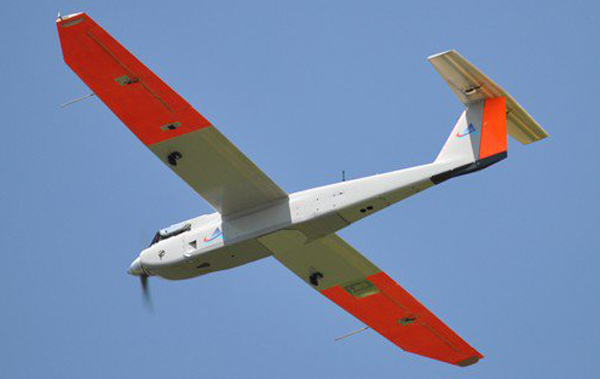Texas A&M University-Corpus Christi announced that the first airborne science missions using unmanned aircraft over the Gulf of Mexico were successfully completed during the week of October 10-17.
Scientists with the Unmanned Aerial Systems Initiative at Texas A&M University-Corpus Christi and representatives from American Aerospace Airborne Systems Group completed six flights of the Recon System-16 unmanned aircraft system that originated on a remote stretch of beach on the Padre Island National Seashore. The RS-16 System utilizes 13-foot wingspan unmanned aircraft that can stay aloft for up to 12 to 16 hours on less than two gallons of gasoline.
“The UAS capability directly benefits the program in geospatial computing and will significantly advance the University’s competitiveness for federally-funded research,” said Dr.
Stacey Lyle, director of the UAS initiative. “In addition, this capability enables the University to serve as a leader in UAS technology training and education at both the state and national levels.”
Linked to the RS-16 Mobile Command Center, the system produces and disseminates real-time streaming video on map, infrared video, and high resolution imagery. It also accommodates a variety of science payloads and can relay communications between widely dispersed ground radios. Practical UAS applications include wildlife inventory, border security, hurricane research and monitoring, detection and tracking of harmful algae blooms, and situational awareness for incident response.
“The Unmanned Systems Initiative is an example of our commitments to support sustainable growth of the coastal communities, to enlarge the research enterprise, and to enhance the students’ learning experience,” said Dr. L.D. Chen, director of the School of Engineering and Computing Sciences. “These capabilities directly benefit our research endeavors by providing students, faculty, and staff with excellent opportunities to pursue interdisciplinary research in the Gulf Coast region.”
In July, the Unmanned Aerial Systems Initiative at Texas A&M-Corpus Christi received a Federal Aviation Administration Certification Authorization to fly Tier II unmanned aircraft like the RS-16 into national air space. The air space, which encompasses approximately 500 square miles, reaches several miles into the Gulf of Mexico and covers 39 miles of the Padre Island National Seashore and a substantial portion of the Laguna Madre intracoastal waterway.
Source: Avionics Intelligence

